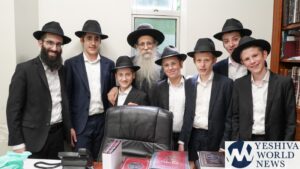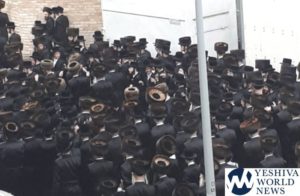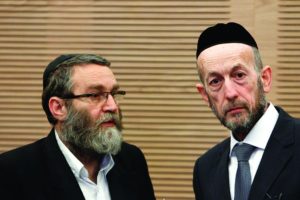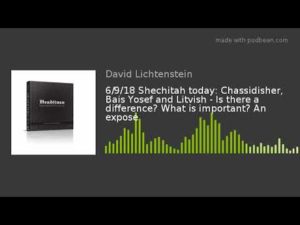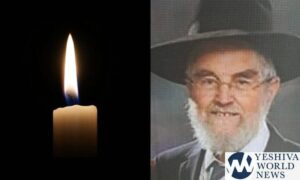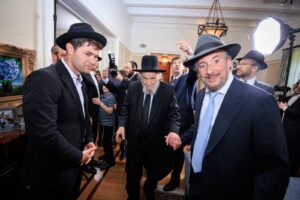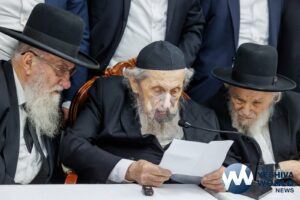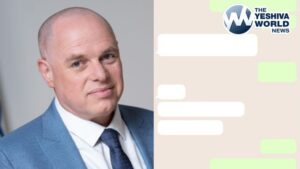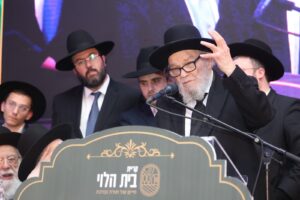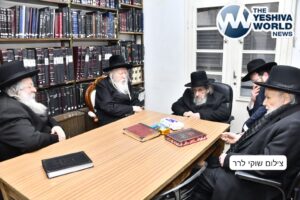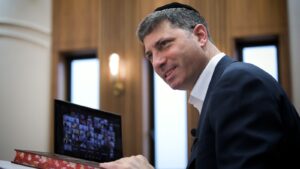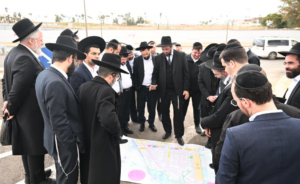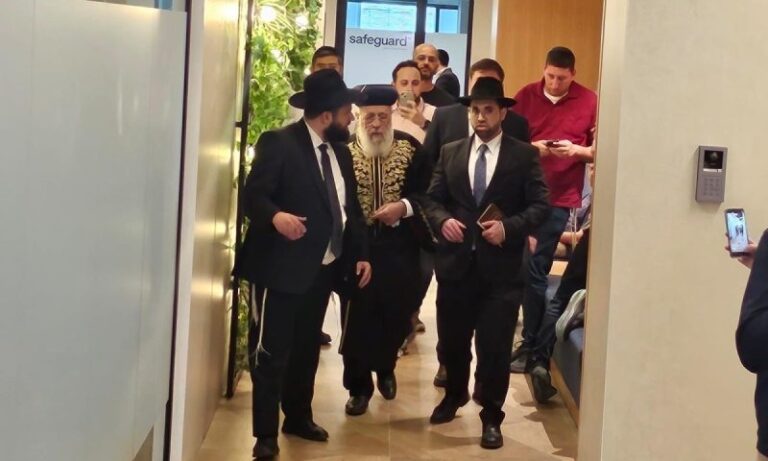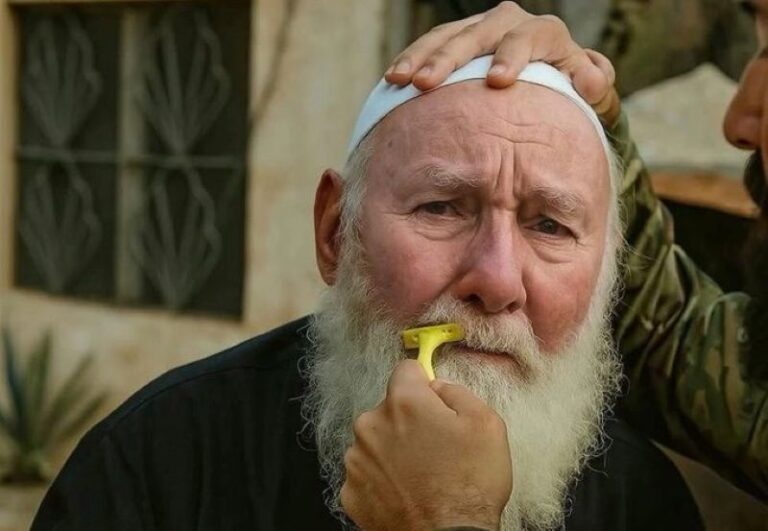
WATCH: “The 1st Litvish Rebbe:” Uproar Over Song Sung By Thousands Of Bochurim At HaRav Sorotzkin’s Son’s Chasunah
Thousands of yeshiva bochurim and avreichim from the Ateret Shlomo mosdos participated on Tuesday evening at the chasunah of the son of the Rosh Yeshivah, HaGaon HaRav Shalom Ber Sorotzkin, and the granddaughter of HaGaon HaRav Yitzchak Soloveitchik, which was held at the D-CITY hall in Ma’ale Adumim, near Jerusalem. The chasunah was attended by Gedolei Yisrael, Roshei Yeshivos, and Rabbanim from all stripes of Chareidi society, including HaGaon HaRav Moshe Shternbuch, HaGaon HaRav Berel Dov Povarsky, HaGaon HaRav Eliezer Yehudah Finkel, HaGaon HaRav Yitzchak Yosef, HaGaon HaRav Avraham Salim, HaGaon HaRav Shimon Galay, and many others At the end of the chasunah, the bochurim gathered on bleachers on both sides of the hall, and in a sight reminiscent of a Chassidish chasunah, HaRav Sorotskin stood in the middle and led the singing and dancing. “The first Litvish Rebbe,” Hebrew Mishpacha editor Aryeh Erlich jokingly wrote. At one point, singer Ahrele Samet, who is a Toldos Aharon chassid, began singing the Toldos Aharon song: “ד’ הוּא מַלְכֵּנוּ וְלוֹ אֲנַחְנוּ עֲבָדִים, הַתּוֹרָה הִיא אֱמוּנָתֵנוּ וּבָהּ אֲנַחְנוּ מַאֲמִינִים. בְּשִׁלְטֹון הַכּוֹפְרִים אֵין אָנוּ מַאֲמִינִים, אֵין אָנוּ מַאֲמִינִים וּבְחֻקּוֹתֵיהֶם אֵין אָנוּ מִתְחַשְּׁבִים, אֵין אָנוּ מִתְחַשְּׁבִים. בְּדֶרֶךְ הַתּוֹרָה נֵלֵךְ בָּאֵשׁ וּבַמַּיִם”. But he sang the song with a twist: “ובשלטון הכופרים אין אנו מאמינים” [we don’t believe in the heretical government], “ובלשכותיהם אין אנו מתייצבים” [we won’t be recruited to their offices] – a reference to the current efforts to recruit bnei yeshivos – ending with “בדרך התורה נלך באש ובמים.” Videos of the song posted by Israeli media outlets on Wednesday morning led to a political uproar, with politicians such as Yair Lapid and Avigdor Lieberman slamming the calls for draft evasion and Lieberman repeating the message in the bill his party proposed to take away voting rights for those who don’t serve: “Don’t enlist, don’t vote.” According to a Kikar H’Shabbat report, not all bochurim agreed with the song’s message, with one bochur saying: “There is no doubt that there were crazy energies in the air and there was a feeling of unity that hadn’t been around for a long time, but it also grated on us a lot because we are in a sensitive period in the country, and the truth must be told – we are not really Neturei Karta or Peleg, and it was too extreme for me.” Another bochur said: “I felt like I was at Har Sinai. There was a spirit of hisrommemus and a feeling that the entire Chareidi public is united under the instruction of HaGaon HaRav Dov Landau not to report to the recruitment office. The feeling was that this is everyone’s concern, even those who are not necessarily obligated to enlist.” HaRav Shalom Ber also sang “וכל מאמינים” and “עוצה עצה ותופר”, among other songs. The dancing and singing continued until the wee hours of the morning. (YWN Israel Desk – Jerusalem)

